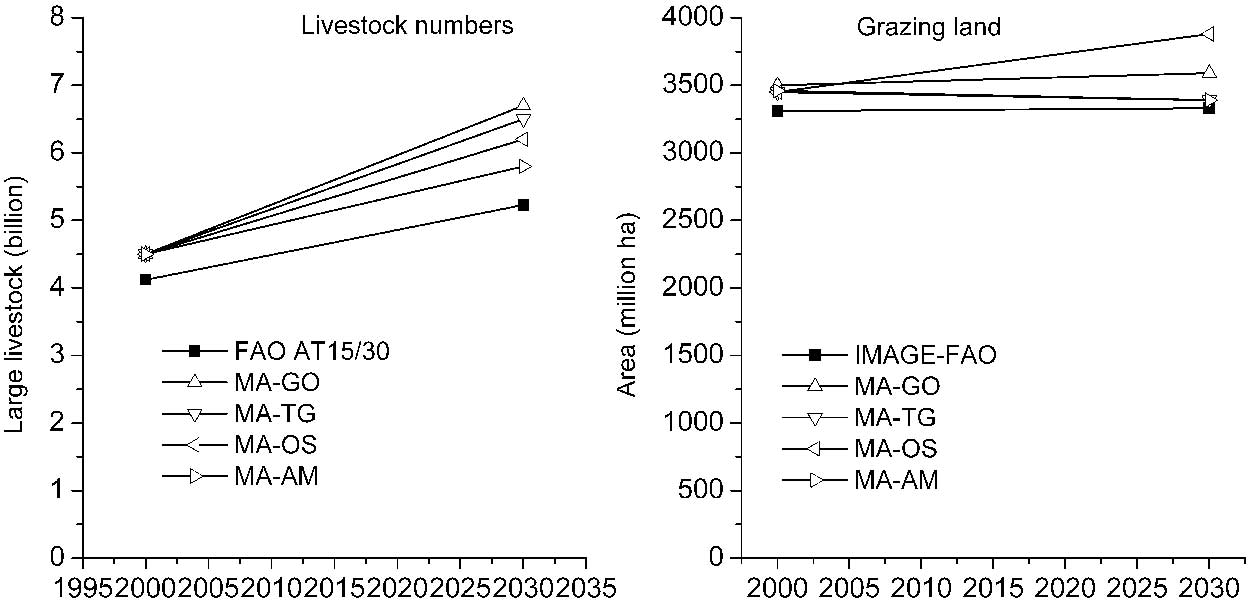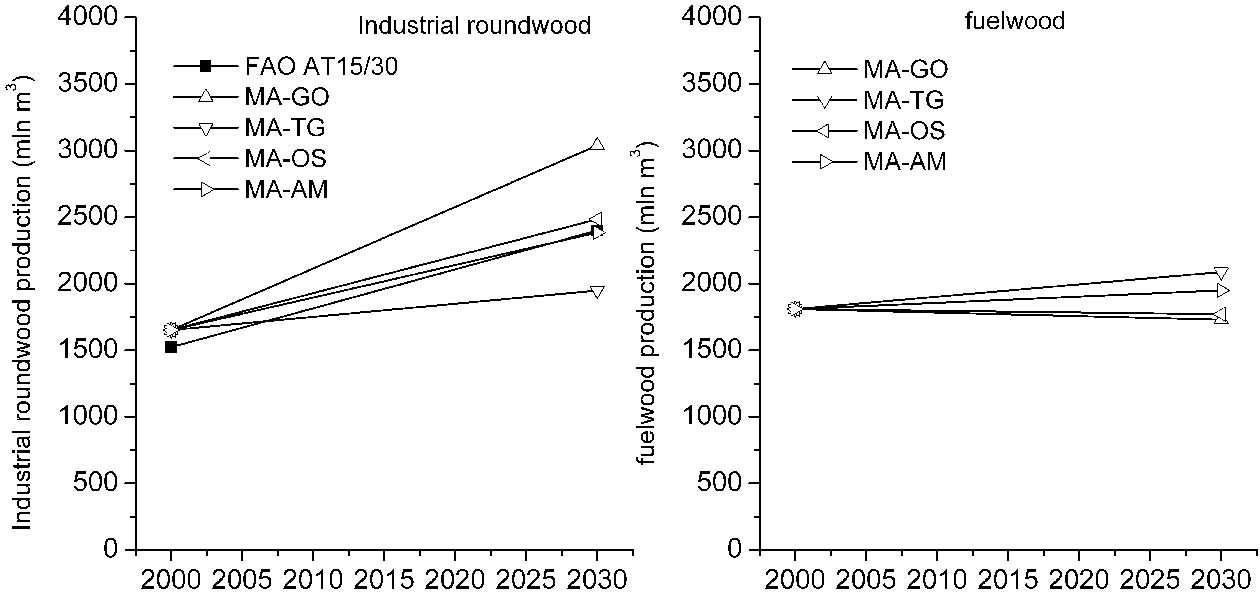| Previous | Return to table of contents | Search Reports | Next |
| « Back to weltagrarbericht.de | ||
298 | IAASTD Global Report

Figure 4-34. Number of large livestock and total grazing area in selected scenarios. Source: MNP, 2006.
Note: FAO refers to the IMAGE implementation of the FAO scenario.
and the limited information found in the 3 assessments looked at here some trends may be hypothesized: • Assessments expect agricultural trade to increase, as indicated earlier (see 4.3.1). These increases are most pronounced in the globalization scenarios (assuming a reduction of trade barriers)—but also occur in scenarios that assume a more regional focus as a result of increasing demand for agricultural products. Obviously, this trend may have very important implications for both commercial and small-scale farmers in developing countries. Another implication may be the increasing importance of multinational companies. |
|
the importance of different actors in the food systems (see 4.4.1), although consequences are hard to assess. The role of farmers may, for instance, be very different in the MA's Global Orchestration scenario (with a strong market focus) than under the MA's Adaptive Mosaic scenario (in which farmers may successfully organize themselves). Important consequences of the trend towards retailers and supermarkets (and underlying urbanization) also include changes in diets (4.4.1), an increasing focus on production standards, demanding quality and safety attributes, and an increasing commercialization of upstream production processes. |

Figure 4-35. World production of forest products in selected scenarios. Source: FAO, 2006b; MA 2005a
| Previous | Return to table of contents | Search Reports | Next |
| « Back to weltagrarbericht.de | ||